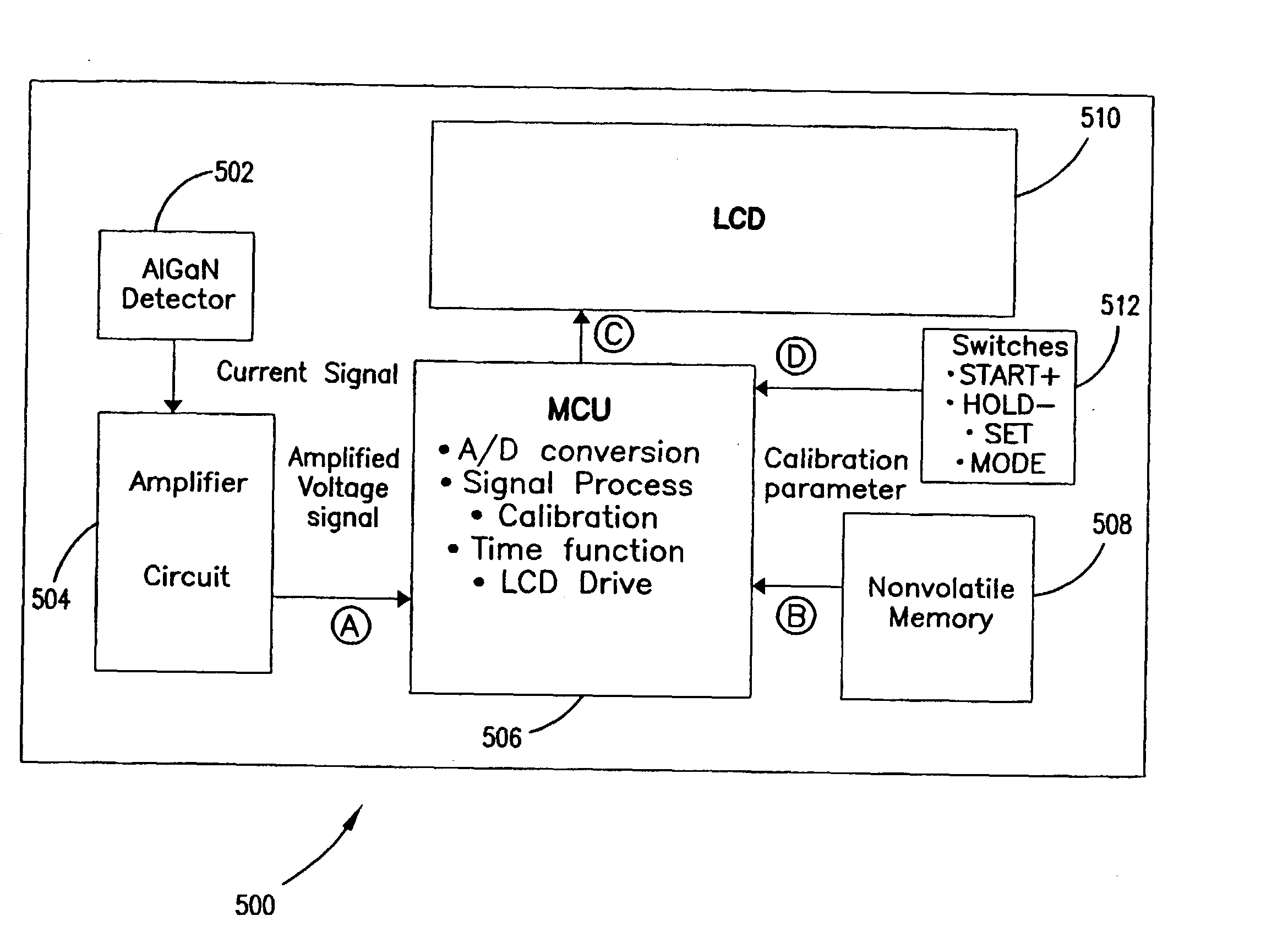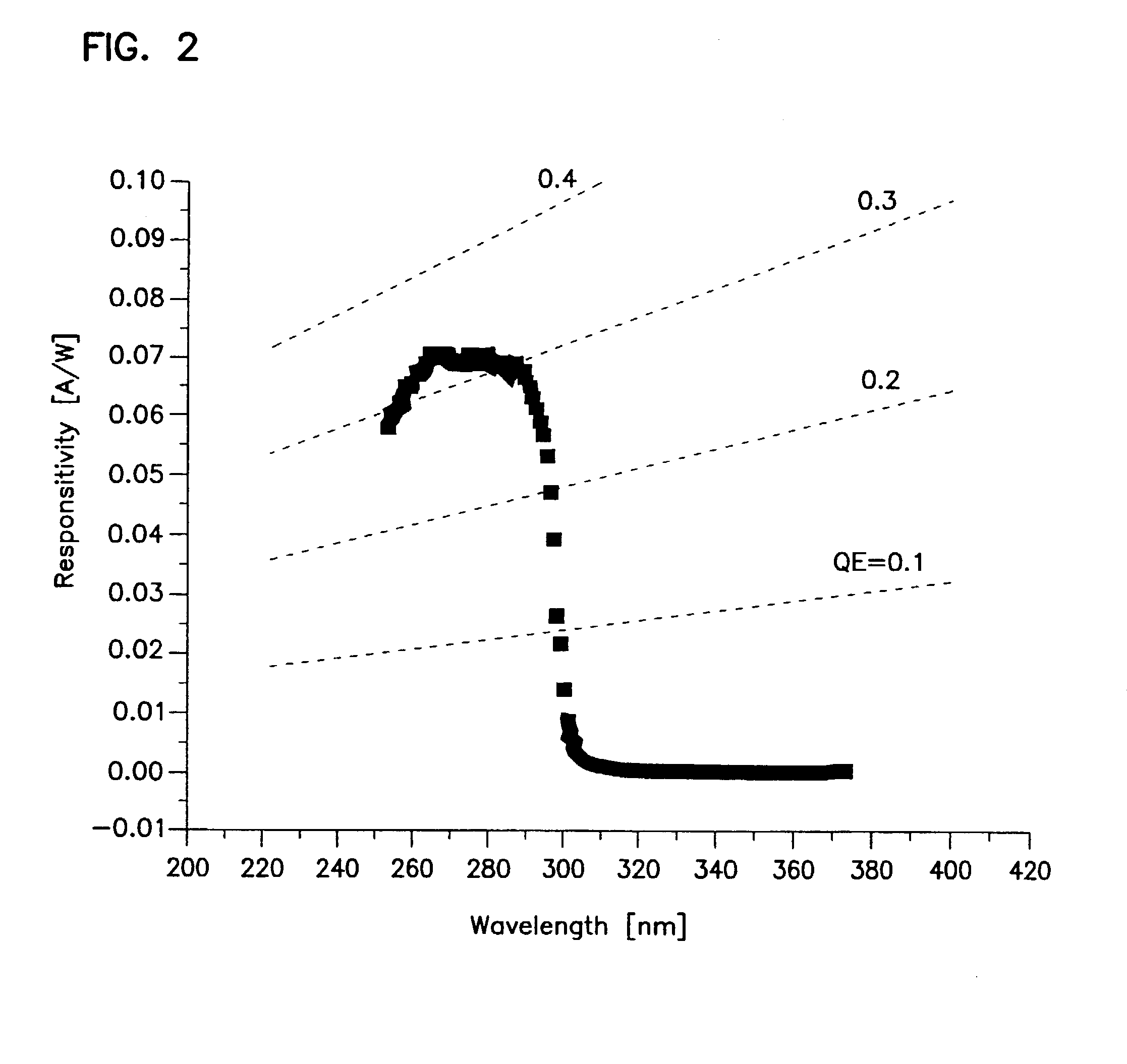Device and method for ultraviolet radiation monitoring
a technology of ultraviolet radiation and monitoring device, which is applied in the direction of optical radiation measurement, photometry using electric radiation detector, instruments, etc., can solve the problems that conventional devices and methods have not adequately addressed these and other needs, and the ultraviolet radiation of wavelengths between 290 nm and 320 nm ("uv-b") is known to be particularly harmful to humans
- Summary
- Abstract
- Description
- Claims
- Application Information
AI Technical Summary
Problems solved by technology
Method used
Image
Examples
Embodiment Construction
[0028] The UV-monitoring device and method of the invention are particularly useful for monitoring the UV radiation most harmful to human skin. They provide sensitive and accurate UV measurements by using aluminum gallium nitride detectors with tailored composition and UV dosage limit warning signals based on calculations that take into account user skin type and UV-blocking power of any sunscreen the user is using.
[0029] On average, how long a person may be safely exposed to UV radiation is determined by a number of factors. First, the safe exposure time, i.e., the amount of time a person can stay in the solar UV radiation without skin damage, is inversely proportional to the intensity of the UV radiation, often expressed as "UV-index" ("UVI") for solar UV. Second, the tolerance of UV radiation by an individual is related to that individual's skin type, which may be quantified as a numeric "skin factor" ("SF"), devised by the American Dermatological Association. Other factors being...
PUM
 Login to View More
Login to View More Abstract
Description
Claims
Application Information
 Login to View More
Login to View More - R&D
- Intellectual Property
- Life Sciences
- Materials
- Tech Scout
- Unparalleled Data Quality
- Higher Quality Content
- 60% Fewer Hallucinations
Browse by: Latest US Patents, China's latest patents, Technical Efficacy Thesaurus, Application Domain, Technology Topic, Popular Technical Reports.
© 2025 PatSnap. All rights reserved.Legal|Privacy policy|Modern Slavery Act Transparency Statement|Sitemap|About US| Contact US: help@patsnap.com



